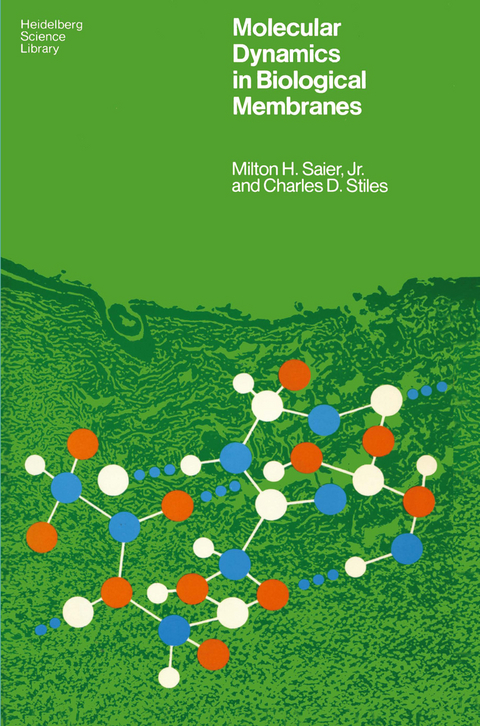
Molecular Dynamics in Biological Membranes
Springer-Verlag New York Inc.
978-0-387-90142-8 (ISBN)
In prokaryotic organisms protein synthesis is initiated with N-formyl methionyl-transfer RNA (tRNA), whereas methionyl tRNA serves this function in the cyto- plasm of the eukaryote. Mechanistic differences may have evolved to accommodate the differing degrees of com- plexity of cellular construction or to coordinate functions of differentiated cells in a multicellular organism. Yet, we must realize that the basic, life-endowing molecular pro- cesses had to exist prior to extensive evolutionary diverg- ence-before the appearance of two distinct cell types.
1 Introduction: Cell Structure and Function.- 2 Constituents of Biological Membranes.- Membrane isolation.- Membrane composition.- Membrane lipids.- Membrane proteins.- 3 Structure of Membranes and Serum Lipoprotein Complexes.- Soap molecules in aqueous solution.- Biological membranes.- Serum lipoprotein complexes.- Fluidity of membrane constituents.- Membrane action of anesthetics.- 4 Biological Consequences of Membrane Fluidity and Fusion.- Membrane biogenesis.- Intercellular junction formation.- Myogenesis.- Phagocytosis.- Secretion.- 5 Transmembrane Solute Transport Mechanisms.- Ion-transporting antibiotics.- Group translocation—the bacterial phosphotransferase system.- Group translocation—intestinal disaccharidases.- Active transport mechanisms in intestinal epithelial cells.- Energy interconversion and active transport in bacteria.- 6 Sensory Perception I: Chemoreception.- Bacterial chemoreception.- Chemotactic responses of solitary eukaryotic cells.- The chemical regulation of insect behavior.- The chemical senses of mammals.- 7 Sensory Perception II: Transmission Mechanisms.- The resting membrane potential and action potentials.- Excitability-inducing material.- Ion-conducting channels in excitable membranes.- Bioelectric control of ciliary activity in Paramecium.- Photoreception in the rod cell of the mammalian eye.- Bacterial photoreception and transmission.- 8 Hormonal Regulation of Cellular Metabolism.- The insulin receptor.- Possible mechanisms of hormone regulation.- Regulation of bacterial metabolism.- Regulation of cellular cyclic AMP levels.- 9 Cell Recognition.- Adhesion of bacteriophage to bacterial hosts.- Heterotypic adhesion—sexual agglutination in yeast.- Homotypic adhesion—sponge aggregation.- Animal cell adhesion and malignancy.- 10 Roleof the Plasma Membrane in Growth Regulation and Neoplasia.- Growth of normal and transformed animal cells.- Positive growth control.- Negative growth control.- Changes in membrane structure and function associated with transformation.- Microbial systems for studying the molecular basis of neoplastic transformation.- Mammalian growth regulation and membrane biology.- Index 125.
| Reihe/Serie | Heidelberg Science Library |
|---|---|
| Zusatzinfo | 11 Illustrations, black and white; 129 p. 11 illus. |
| Verlagsort | New York, NY |
| Sprache | englisch |
| Maße | 155 x 235 mm |
| Themenwelt | Medizin / Pharmazie |
| Naturwissenschaften ► Biologie ► Mikrobiologie / Immunologie | |
| Naturwissenschaften ► Biologie ► Zellbiologie | |
| ISBN-10 | 0-387-90142-6 / 0387901426 |
| ISBN-13 | 978-0-387-90142-8 / 9780387901428 |
| Zustand | Neuware |
| Haben Sie eine Frage zum Produkt? |
aus dem Bereich


